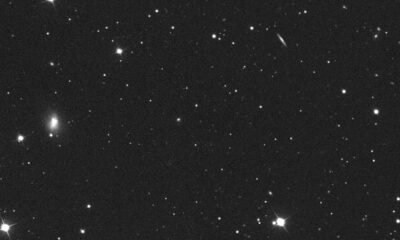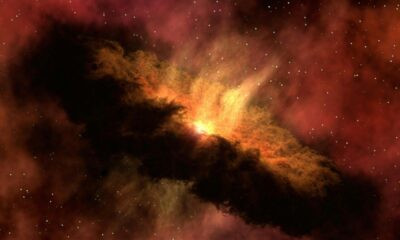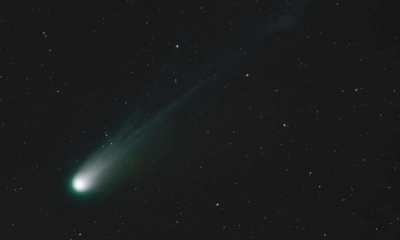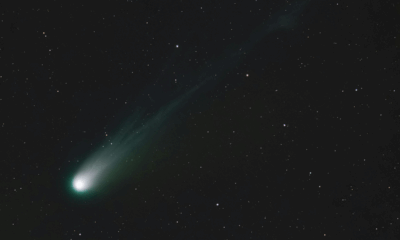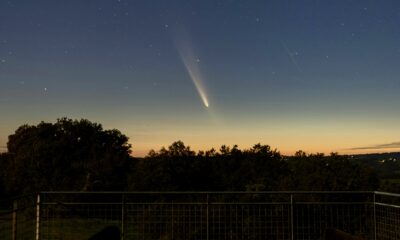Science
Researchers Develop Compact Muon Source Using Laser Plasma Acceleration
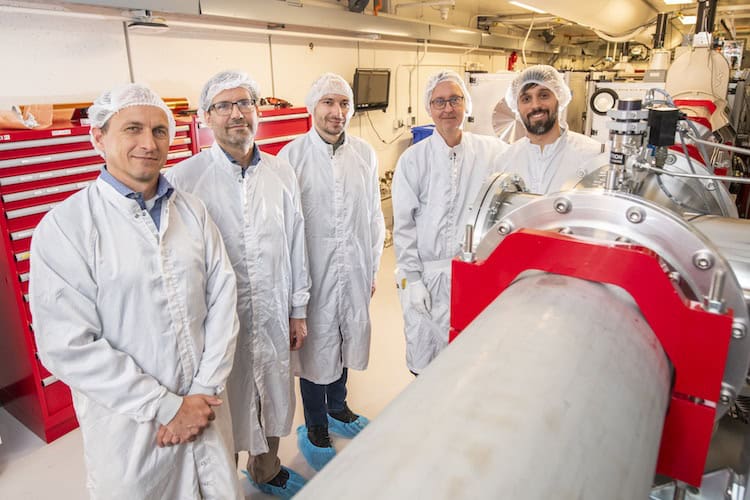
Physicists at the Lawrence Berkeley National Laboratory (LBNL) have made significant strides in the development of a compact source of high-energy muon beams using laser plasma acceleration (LPA). This breakthrough could pave the way for innovative applications, particularly in muon tomography, which allows for imaging the interiors of large, inaccessible structures.
Muon beams, which are charged subatomic particles, have properties similar to electrons but are approximately 200 times heavier. This increased mass enables them to penetrate solid materials more effectively than electrons. Traditionally, muons are generated from cosmic rays colliding with atoms in the atmosphere, resulting in about 10,000 muons reaching every square meter of the Earth’s surface each minute. However, their unpredictable nature and vertical directionality can hamper their use in imaging applications, necessitating months of data accumulation for effective tomography.
An alternative method for producing muons involves proton accelerator facilities, which create low-energy muons by colliding proton beams with fixed carbon targets. Despite their effectiveness, these facilities are often large and costly, limiting their availability for practical applications. The team led by Davide Terzani at LBNL has introduced a new approach that leverages LPA-generated electron beams to create muons in a compact setup.
Using LPA, researchers can generate an ultra-intense and tightly focused laser pulse that ionizes gas atoms, resulting in a plasma. This plasma is capable of producing accelerating fields significantly greater than those in traditional accelerators. In their groundbreaking experiment, the team successfully generated a 10 GeV electron beam within a 30 cm gas target, marking a first in the field.
Following this, the electron beam was directed onto a dense target like tungsten. As the beam interacts with the target, it emits Bremsstrahlung radiation, which facilitates the creation of lepton-antilepton pairs, including muons. This innovative method not only produces muons but also allows for their directional emission, enhancing the efficiency of data collection.
The researchers were able to distinguish between different populations of muons generated during the experiment. They identified a collimated population produced by pair production and another isotropic population generated from meson decay. This ability to differentiate muon signals from background radiation is crucial for the advancement of muon-based applications.
Muon tomography has previously been employed in various fields, including nuclear reactor inspection and archaeological studies, such as the recent discovery of a hidden chamber within Khufu’s Pyramid. The potential applications of this technology extend to imaging the interiors of blast furnaces and nuclear waste storage facilities.
While the current LPA-based technique cannot yet produce muon fluxes adequate for particle physics experiments, it offers a promising avenue for the accelerator community to explore essential components required for future developments, such as a muon collider.
The findings from this research, published in Physical Review Accelerators and Beams, underscore a deeper understanding of muon production sources. Despite the conclusion of the initial funding program for this research, Terzani and his team remain optimistic about the future of LPA-generated muons. They are actively pursuing further experiments to measure the flux and spectrum of the muon beams using new detection techniques.
In addition to optimizing muon production, the LBNL team aims to investigate other applications, including imaging deep ore deposits. This area of research presents challenges due to the stringent requirements for muon energy necessary to penetrate soil effectively. The team is exploring methods to increase the energy of their muon source to meet these demands.
The advancements in muon beam technology not only highlight the innovative applications of laser plasma acceleration but also represent a significant step forward in the field of particle physics. The potential for compact muon sources to revolutionize imaging techniques remains an exciting prospect for researchers and industry alike.
-

 Entertainment2 months ago
Entertainment2 months agoAnn Ming Reflects on ITV’s ‘I Fought the Law’ Drama
-

 Entertainment3 months ago
Entertainment3 months agoKate Garraway Sells £2 Million Home Amid Financial Struggles
-

 Health2 months ago
Health2 months agoKatie Price Faces New Health Concerns After Cancer Symptoms Resurface
-

 Entertainment2 months ago
Entertainment2 months agoCoronation Street’s Carl Webster Faces Trouble with New Affairs
-

 Entertainment2 months ago
Entertainment2 months agoWhere is Tinder Swindler Simon Leviev? Latest Updates Revealed
-

 Entertainment3 months ago
Entertainment3 months agoKim Cattrall Posts Cryptic Message After HBO’s Sequel Cancellation
-

 Entertainment2 months ago
Entertainment2 months agoOlivia Attwood Opens Up About Fallout with Former Best Friend
-

 Science2 weeks ago
Science2 weeks agoBrian Cox Addresses Claims of Alien Probe in 3I/ATLAS Discovery
-

 Entertainment2 months ago
Entertainment2 months agoMasterChef Faces Turmoil as Tom Kerridge Withdraws from Hosting Role
-

 Entertainment3 months ago
Entertainment3 months agoMarkiplier Addresses AI Controversy During Livestream Response
-

 Entertainment4 months ago
Entertainment4 months agoSpeculation Surrounds Home and Away as Cast Departures Mount
-

 World2 months ago
World2 months agoCole Palmer’s Mysterious Message to Kobbie Mainoo Sparks Speculation

